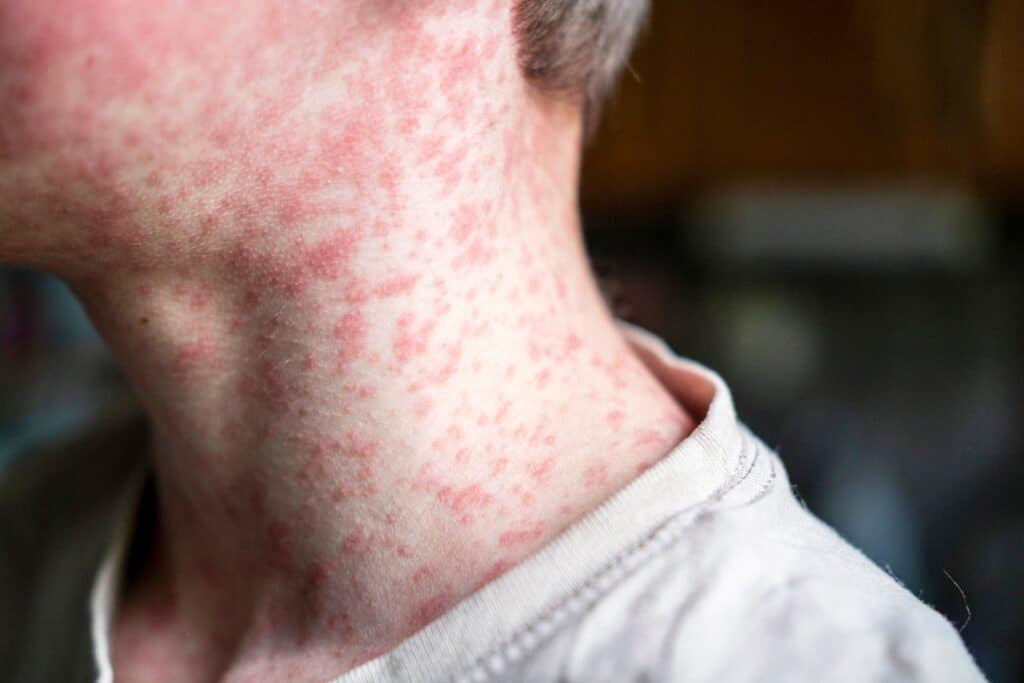
This year, we have seen a significant increase in confirmed measles cases in the USA. Most have been in Texas, but cases have also been seen in many other areas of the country. So far this year, two children and one adult have died from the disease, despite the best medical care. There have been over 700 confirmed cases so far.
Measles is one of the most contagious diseases, with a basic reproduction number (R0) of 12 to 18. This means one infected person can spread the virus to 12 to 18 others in a susceptible population. Over 10 million people contracted the disease worldwide in 2023.
The measles virus is a member of the Paramyxoviridae family. It has plagued humanity for centuries, with descriptions consistent with measles appearing in Persian medical texts as early as the 9th century.
The virus was isolated in 1954, and the first successful vaccine was developed in 1963. Before widespread vaccination, measles caused an estimated 2.6 million deaths globally each year.
In the United States, measles was declared eliminated in 2000, meaning there was no continuous disease transmission for over 12 months. However, measles remains endemic in many countries and can be imported by travelers. In recent years, vaccine hesitancy has contributed to the re-emergence of outbreaks in areas with declining immunization rates.
The incubation period for measles is typically 10 to 14 days from exposure to symptom onset. Individuals are contagious from five days before to four days after the appearance of the rash. The virus is transmitted primarily through respiratory droplets when an infected person coughs or sneezes. It can remain infectious in the air or on surfaces for up to two hours.
Due to its high infectivity, measles has a basic R0 of 12 to 18, making it one of the most contagious infectious diseases. This means one infected person can spread the virus to 12 to 18 others in a susceptible population.
Clinical Presentation
Measles typically progresses through several stages:
- Prodrome (2-4 days): Characterized by high fever (up to 104°F), cough, coryza (runny nose), and conjunctivitis. Koplik spots—small white lesions on the buccal mucosa (like salt granules on a red background)—are a hallmark sign and precede the rash.
- Exanthem Stage: A maculopapular rash appears, starting at the hairline and spreading downward to the trunk and limbs. The rash often coalesces, especially on the face and upper body.
- Recovery: Fever subsides within a few days after the rash appears, and the rash fades in the same order it appeared, often accompanied by fine desquamation (peeling).
Complications
Measles can lead to serious health complications, particularly in young children, pregnant women, and immunocompromised individuals. Common complications include:
- Otitis media: Affects about 1 in 10 children with measles.
- Pneumonia: Occurs in approximately 1 in 20 cases and is the most common cause of measles-related death.
- Diarrhea: Reported in about 8% of cases, contributing to dehydration and nutritional deficits
- Encephalitis: A rare but severe complication affecting 1 in 1,000 cases, leading to seizures, neurological deficits, or death
- Subacute sclerosing panencephalitis (SSPE): A rare, fatal degenerative disease of the central nervous system occurring 7-10 years after measles infection
The measles vaccine is commonly administered as part of the MMR (measles, mumps, rubella) vaccine. The CDC recommends a two-dose schedule. First dose during the 12 to 15 months of age, then a second dose at 4 to 6 years of age.
In outbreak settings or for international travel, infants as young as 6 months may receive an early dose, though this does not count toward the routine two-dose series. Adults born after 1956 who lack evidence of immunity should receive at least one dose, and healthcare workers or international travelers should receive two doses.
The MMR vaccine is approximately 93% effective after the first dose, and 97% effective after the second. It is a live attenuated vaccine, generally well-tolerated with minor side effects, such as fever or mild rash. Serious adverse events are extremely rare.
Widespread vaccination has dramatically altered the epidemiology of measles. Before the introduction of the vaccine, nearly every child contracted measles, and epidemics occurred every 2 to 3 years. In the United States, the implementation of the vaccine led to a 99% reduction in measles cases within two decades.
Globally, the measles vaccination has saved an estimated 23 million lives between 2000 and 2018. The Global Measles and Rubella Strategic Plan, spearheaded by WHO and partners, aims to eliminate measles in at least five WHO regions by increasing vaccine coverage, surveillance, and outbreak response.
However, progress has stalled in recent years due to challenges such as vaccine misinformation, political instability, and disruptions from the COVID-19 pandemic. As a result, outbreaks have re-emerged in regions that had previously controlled the disease.
With sustained global efforts, the goal of measles eradication remains within reach—but it requires confronting misinformation and ensuring vaccine equity for all.
References
Centers for Disease Control and Prevention. (2025, April 11). Measles cases and outbreaks. https://www.cdc.gov/measles/data-research/index.html.
Editorial. (2025, March). US measles outbreak: Causes, consequences and the path forward. eClinicalMedicine, 81. https://www.thelancet.com/journals/eclinm/article/PIIS2589-5370(25)00106-3/fulltext.
Gans, H., & Maldonado, Y. (2024, March). Measles: Clinical manifestations, diagnosis, treatment, and prevention. UpToDate. https://www.uptodate.com/contents/measles-clinical-manifestations-diagnosis-treatment-and-prevention.


